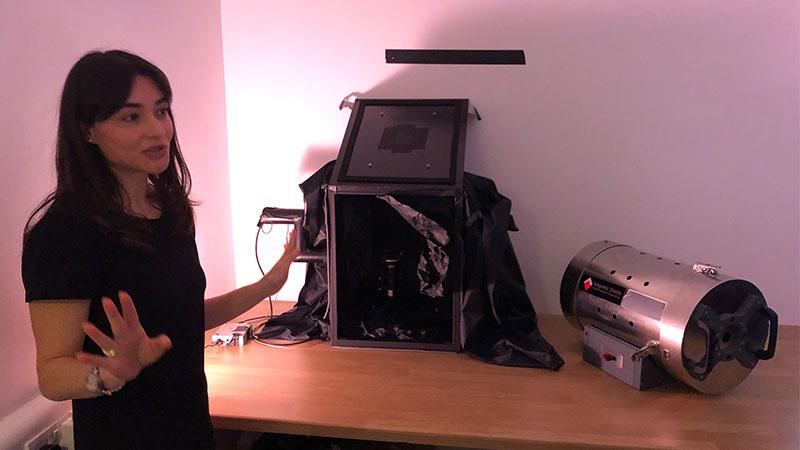Biologists from the University of Westminster and physicists and scientists from the Central Laser Facility (CLF) at Harwell Science and Innovation Campus have developed the technology to investigate how cells communicate with each other using light like never before.

The scientists came together to build a so-called photonic detector (left in the cover picture) which can detect the smallest amount of light, even if it is only a few light particles known as photons.
The discoveries using the new technology may change the way we see Biology, they could alter medicine significantly and could lead to new forms of therapies.
The development of this innovative machine, which has been unveiled to the public at the School of Life Sciences of the University of Westminster, would not have been possible without scientists from separate disciplines combining their knowledge in a unique way.
It has been known since the 1920s when Alexander G. Gurwitsch observed that onion roots can communicate by giving non-chemical communication to each other. But the advances in technology to explore how and why they do this has been lacking, until now.
The innovative technology was developed by Dr Alasdair M. Mackenzie and Professor Stanley W. Botchway from the CLF operated by the Science and Technology Facilities Council (STFC), and Dr Rhys Mould, Professor Alistair V.W. Nunn and Professor Jimmy Bell from the University of Westminster’s Research Centre for Optimal Health.
The collaboration was made possible by the generous funding from The Guy Foundation which is committed to improving health through supporting high-impact research in Quantum Biology. The Foundation was set up by Professor Geoffrey Guy, who was appointed as Visiting Professor at Westminster in 2017, and his wife Kate.
The Westminster team will now embark on biological research projects in the fields of biophotonic detection and characterisation, paving the way for potential breakthroughs in the area. They will be building on their recently published collaborative research project that they carried out with the CLF scientists where they have found that bean sprouts emit light to warn each other of dangers such as drought and toxins in the soil. The study which was published in the Journal of Photochemistry and Photobiology.
Dr. Rhys Mould, one of the authors and biologists from the University of Westminster, said: “This collaboration is a clear demonstration of the importance of interdisciplinary work. Scientists from completely separate specialisms came together to develop the methodology that makes it possible, for the first time, to directly detect biophotonic communication between mitochondria, something that until recently was thought to be beyond current technological capabilities. Together we have the capability to do research that could fundamentally change the way we see Biology and in the long run could lead to medical breakthroughs.”
Dr. Alasdair Mackenzie from the Science and Technology Facilities Council’s Central Laser Facility said: “This work has been a big challenge, and it has taken us lots of effort to get to this point. However, it has also allowed us to form this great collaborative team each bringing their own unique speciality and perspective towards the problem. We have learned a lot from each other, and I have really enjoyed getting to know everyone involved. As the work pushes forward, from this point we really have a great chance to measure the weakest of light emission and come to some meaningful conclusions about fundamentals of life due to these strengths.”
Some of the future work in this field are also being made possible by the use of systems developed by the University of Nottingham and Magnetic Shields Ltd, such as the magnetic shield on the right hand side in the cover image.
Read a previous study exploring Non-chemical signalling between mitochondria.
Learn more about the Research Centre for Optimal Health at the University of Westminster.








